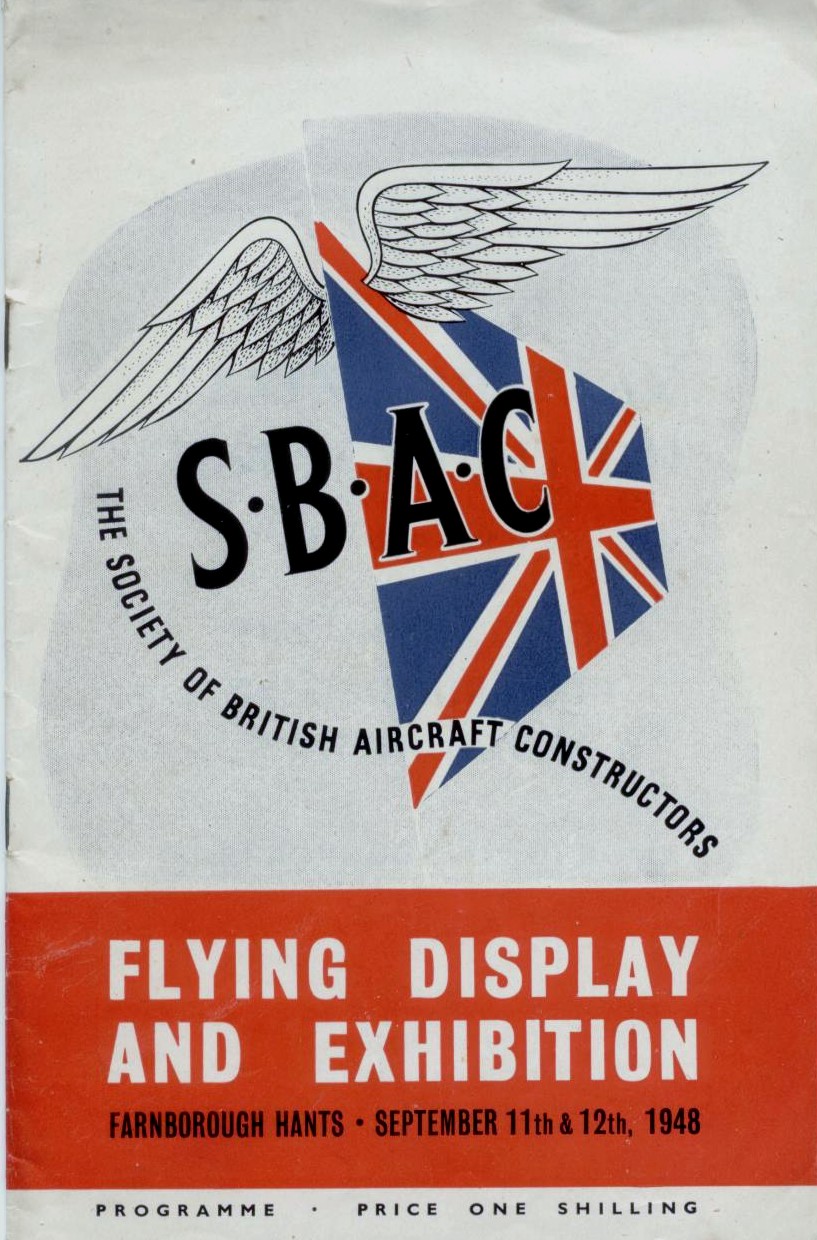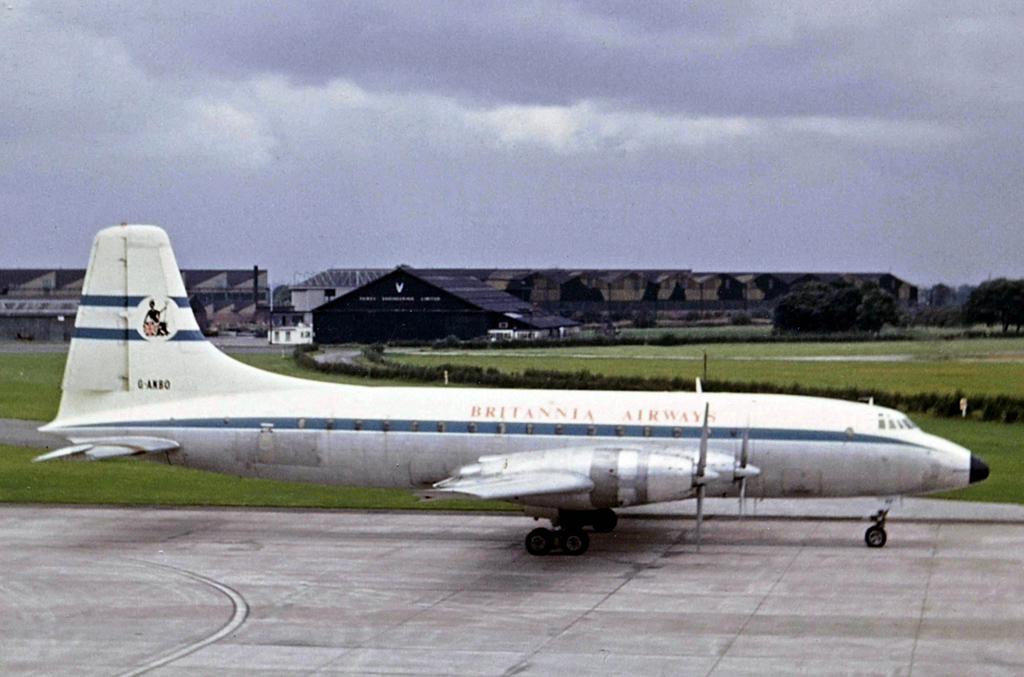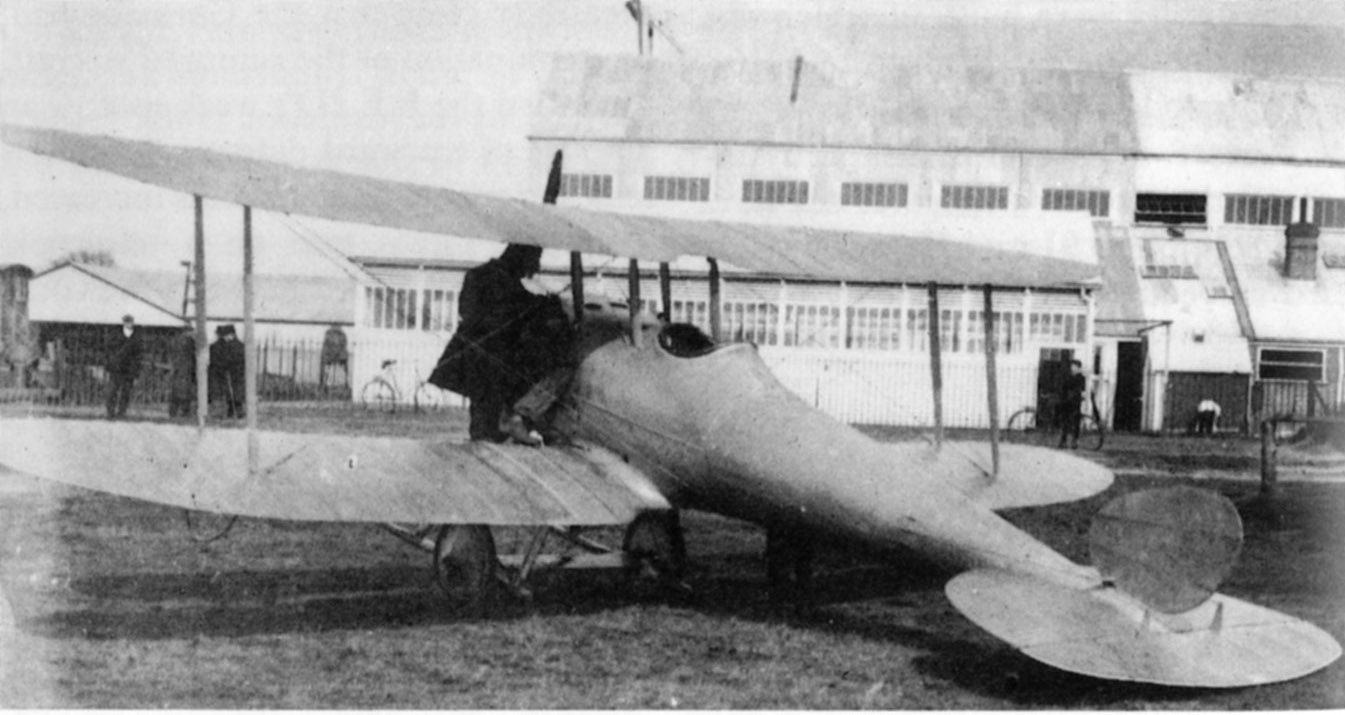|
Farnborough International Air Show
The Farnborough Airshow, officially the Farnborough International Airshow, is a trade exhibition for the aerospace and defence industries, where civilian and military aircraft are demonstrated to potential customers and investors. Since its first show in 1948, Farnborough has seen the debut of many famous planes, including the Vickers VC10, Concorde, the Eurofighter, the Airbus A380, and the Lockheed Martin F-35 Lightning II. At the 1958 show, the RAF's Black Arrows executed a 22-plane formation loop, setting a world record. The international trade show is put together every two years by FIL Farnborough International Ltd. and runs for five days. Until 2020, the show ran for a full week with trade visitors attending on the first five days and the weekend reserved for the general public. Programming takes place at the Farnborough Airport, which lies roughly 50 kilometres south-west of London. Status The Farnborough International Airshow is the second-largest show of its kind afte ... [...More Info...] [...Related Items...] OR: [Wikipedia] [Google] [Baidu] |
Air Show
An air show (or airshow, air fair, air tattoo) is a public event where aircraft are exhibited. They often include aerobatics demonstrations, without they are called "static air shows" with aircraft parked on the ground. The largest air show measured by number of exhibitors and size of exhibit space is Le Bourget followed by Farnborough, while Dubai air show and Singapore Air Show are both claiming the third place. The largest air show or fly-in by number of participating airplanes is EAA AirVenture Oshkosh, commonly known as "Oshkosh" after its location in Wisconsin, with approximately 10,000 airplanes participating each year. The biggest military airshow in the world is the Royal International Air Tattoo, at RAF Fairford in England. Outline Some airshows are held as a business venture or as a trade event where aircraft, avionics and other services are promoted to potential customers. Many air shows are held in support of local, national or military charities. Mili ... [...More Info...] [...Related Items...] OR: [Wikipedia] [Google] [Baidu] |
Flight International
''Flight International'' is a monthly magazine focused on aerospace. Published in the United Kingdom and founded in 1909 as "A Journal devoted to the Interests, Practice, and Progress of Aerial Locomotion and Transport", it is the world's oldest continuously published aviation news magazine. ''Flight International'' is published by DVV Media Group. Competitors include Jane's Information Group and '' Aviation Week''. Former editors of, and contributors include H. F. King, Bill Gunston, John W. R. Taylor and David Learmount. History The founder and first editor of ''Flight'' was Stanley Spooner. He was also the creator and editor of ''The Automotor Journal'', originally titled ''The Automotor Journal and Horseless Vehicle''.Guide To British Industrial History: Biographies: ' ... [...More Info...] [...Related Items...] OR: [Wikipedia] [Google] [Baidu] |
Vickers Viscount
The Vickers Viscount is a British medium-range turboprop airliner first flown in 1948 by Vickers-Armstrongs. A design requirement from the Brabazon Committee, it entered service in 1953 and was the first turboprop-powered airliner. The Viscount was well received by the public for its cabin conditions, which included pressurisation, reductions in vibration and noise, and panoramic windows. It became one of the most successful and profitable of the first post-war transport aircraft; 445 Viscounts were built for a range of international customers, including in North America. Development Origins The Viscount was a response to the 1943 Brabazon Committee's proposed Type II design for a post-war small medium-range pressurised aircraft to fly less-travelled routes, carrying 24 passengers up to 1,750 mi (2,816 km) at 200 mph (320 km/h).Cacutt 1989, pp. 323–333. During discussions between the committee and Vickers' chief designer, Rex Pierson, Vickers advoc ... [...More Info...] [...Related Items...] OR: [Wikipedia] [Google] [Baidu] |
Bristol Proteus
The Bristol Proteus was the Bristol Engine Company's first mass-produced gas turbine engine design, a turboprop that delivered just over 4,000 hp (3,000 kW). The Proteus was a reverse-flow gas turbine. Because the second turbine drove no compressor stages, but only the propeller, this engine was classified as a free-turbine. It powered the Bristol Britannia airliner, small naval patrol craft, hovercraft and electrical generating sets. It was also used to power a land-speed record car, the Bluebird-Proteus CN7. After the merger of Bristol with Armstrong Siddeley the engine became the Bristol Siddeley Proteus, and later the Rolls-Royce Proteus. The Proteus was to have been superseded by the Bristol Orion which would have given a Britannia a 75% increase in power for cruising faster. Design and development The Proteus was to power a very large airliner for use after the war. Design work started in September 1944 with its free turbine and propeller gearbox based on ... [...More Info...] [...Related Items...] OR: [Wikipedia] [Google] [Baidu] |
Bristol Centaurus
The Centaurus was the final development of the Bristol Engine Company's series of sleeve valve radial aircraft engines. The Centaurus is an 18-cylinder, two-row design that eventually delivered over . The engine was introduced into service late in the Second World War and was one of the most powerful aircraft piston engines to see service. Design and development Like other Bristol sleeve valve engines, the Centaurus was based on the design knowledge acquired from an earlier design, in this case the Bristol Perseus cylinder. The Centaurus used 18 Perseus cylinders. The same cylinder was in use in the contemporary 14-cylinder Hercules, which was being brought into production when the design of the Centaurus started. The Centaurus had a cylinder swept volume of , nearly as much as the American Wright R-3350 ''Duplex-Cyclone'' large radial, making the Centaurus one of the largest aircraft piston engines to enter production, while that of the Hercules was . The nearly 40 p ... [...More Info...] [...Related Items...] OR: [Wikipedia] [Google] [Baidu] |
Bristol Brabazon
The Bristol Type 167 Brabazon was a large British piston-engined propeller-driven airliner designed by the Bristol Aeroplane Company to fly transatlantic routes between the UK and the United States. The type was named ''Brabazon'' after the Brabazon Committee and its chairman, Lord Brabazon of Tara, who had developed the specification to which the airliner was designed. While Bristol had studied the prospects of developing very large aircraft as bomber aircraft prior to and during the Second World War, it was the release of a report compiled by the Brabazon Committee which had led the company to adapting its larger bomber proposal into a prospective large civil airliner to meet the ''Type I'' specification for a very large airliner for the long-distance transatlantic route. Initially designated as the Type 167, the proposed aircraft was furnished with a huge 25 ft (8 m)-diameter fuselage containing full upper and lower decks on which passengers would be seated in lu ... [...More Info...] [...Related Items...] OR: [Wikipedia] [Google] [Baidu] |
De Havilland Comet
The de Havilland DH.106 Comet was the world's first commercial jet airliner. Developed and manufactured by de Havilland in the United Kingdom, the Comet 1 prototype first flew in 1949. It featured an aerodynamically clean design with four de Havilland Ghost turbojet engines buried in the wing roots, a pressurised cabin, and large square windows. For the era, it offered a relatively quiet, comfortable passenger cabin and was commercially promising at its debut in 1952. Within a year of entering airline service, problems started to emerge, three Comets being lost within twelve months in highly publicised accidents, after suffering catastrophic in-flight break-ups. Two of these were found to be caused by structural failure resulting from metal fatigue in the airframe, a phenomenon not fully understood at the time; the other was due to overstressing of the airframe during flight through severe weather. The Comet was withdrawn from service and extensively tested. Design and co ... [...More Info...] [...Related Items...] OR: [Wikipedia] [Google] [Baidu] |
Armstrong Whitworth A
Armstrong may refer to: Places * Armstrong Creek (other), various places Antarctica * Armstrong Reef, Biscoe Islands Argentina * Armstrong, Santa Fe Australia * Armstrong, Victoria Canada * Armstrong, British Columbia * Armstrong, Ontario * Armstrong, Thunder Bay District, Ontario * Armstrong, Ontario (Indian settlement) United States * Armstrong, California * Armstrong, Delaware * Armstrong, Florida * Armstrong, Georgia * Armstrong, Illinois * Armstrong, Indiana * Armstrong, Iowa * Armstrong, Minnesota * Armstrong, Missouri * Armstrong, Oklahoma * Armstrong, Texas * Armstrong, Wisconsin * Armstrong County, Pennsylvania * Armstrong County, Texas * Armstrong Lake (Blue Earth County, Minnesota), a lake in Minnesota * Armstrong Township, Vanderburgh County, Indiana * Armstrong Township, Pennsylvania (other), more than one, including ** Armstrong Township, Indiana County, Pennsylvania ** Armstrong Township, Lycoming County, Pennsylvania * Louis Ar ... [...More Info...] [...Related Items...] OR: [Wikipedia] [Google] [Baidu] |
Farnborough Airshow Programme - 1948
Farnborough may refer to: Australia * Farnborough, Queensland, a locality in the Shire of Livingstone United Kingdom * Farnborough, Hampshire, a town in the Rushmoor district of Hampshire, England ** Farnborough (Main) railway station, a railway station in the town of Farnborough, Hampshire ** Farnborough North railway station, a railway station in the town of Farnborough, Hampshire * Farnborough, Berkshire, a small village * Farnborough, London, a settlement in the London Borough of Bromley * Farnborough, Warwickshire, a village and civil parish in the English county of Warwickshire * Farnborough Rural District, a rural district in Warwickshire, England, from 1894 to 1932 See also * Farnborough Airport, at Farnborough, Hampshire, formerly the Royal Aircraft Establishment * Farnborough Airshow, a seven-day international trade fair held biennially in Hampshire * Farnborough College of Technology * Farnborough F.C., an English football team in Farnborough, Hampshire * Royal ... [...More Info...] [...Related Items...] OR: [Wikipedia] [Google] [Baidu] |
Royal Aircraft Establishment
The Royal Aircraft Establishment (RAE) was a British research establishment, known by several different names during its history, that eventually came under the aegis of the UK Ministry of Defence (MoD), before finally losing its identity in mergers with other institutions. The first site was at Farnborough Airfield ("RAE Farnborough") in Hampshire to which was added a second site RAE Bedford ( Bedfordshire) in 1946. In 1988 it was renamed the Royal Aerospace Establishment (RAE) before merging with other research entities to become part of the new Defence Research Agency in 1991. History In 1904–1906 the Army Balloon Factory, which was part of the Army School of Ballooning, under the command of Colonel James Templer, relocated from Aldershot to the edge of Farnborough Common in order to have enough space to inflate the new "dirigible balloon" or airship which was then under construction.Walker, P; Early Aviation at Farnborough, Volume I: Balloons, Kites and Airships, Mac ... [...More Info...] [...Related Items...] OR: [Wikipedia] [Google] [Baidu] |
Radlett
Radlett is a village in Hertfordshire, England, between Elstree and St Albans on Watling Street, with a population of 8,042. It is in the council district of Hertsmere in the south of the county, and is covered by two wards; Aldenham East and Aldenham West. It is located inside the M25 motorway. Locality Radlett lies in the valley of Tykes Water, a stream that runs north from Aldenham Reservoir to the River Colne. Now entirely surrounded by the Metropolitan Green Belt, it is subject to significant 'infill' development and there is pressure to relax the Green Belt restrictions. Radlett is located 14 miles (22.5 km) north west of the centre of London. It is one of the wealthiest places in Britain and the second most expensive town to buy a house outside London. The town contains many substantial detached houses with large gardens. In the older centre there are also a few streets with Victorian semi detached and terraced houses. Watling Street, which is the main road ... [...More Info...] [...Related Items...] OR: [Wikipedia] [Google] [Baidu] |
Handley Page
Handley Page Limited was a British aerospace manufacturer. Founded by Frederick Handley Page (later Sir Frederick) in 1909, it was the United Kingdom's first publicly traded aircraft manufacturing company. It went into voluntary liquidation and ceased to exist in 1970. The company, based at Radlett Aerodrome in Hertfordshire, was noted for its pioneering role in aviation history and for producing heavy bombers and large airliners. History Frederick Handley Page first experimented with and built several biplanes and monoplanes at premises in Woolwich, Fambridge and Barking Creek. His company, founded on 17 June 1909, became the first British public company to build aircraft. In 1912, Handley Page established an aircraft factory at Cricklewood after moving from Barking. Aircraft were built there, and flown from the company's adjacent airfield known as Cricklewood Aerodrome, which was later used by Handley Page Transport. The factory was later sold off to Oswald Sto ... [...More Info...] [...Related Items...] OR: [Wikipedia] [Google] [Baidu] |








